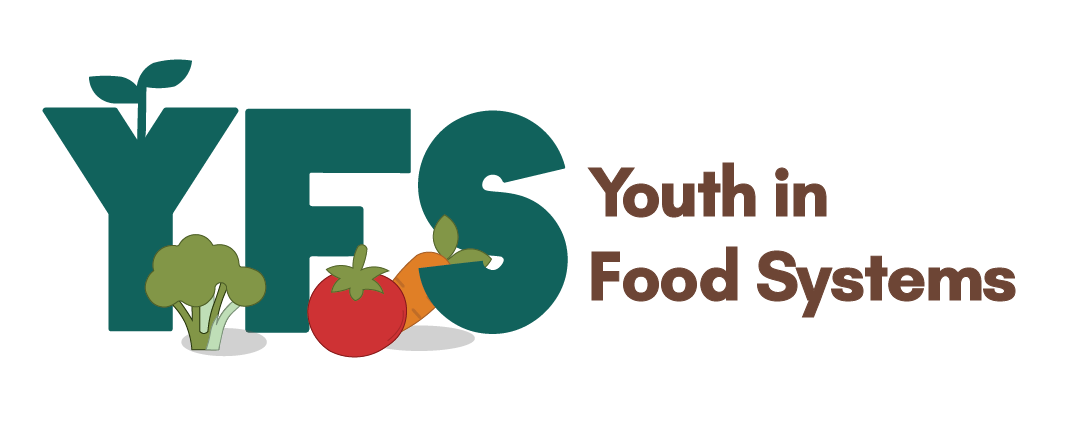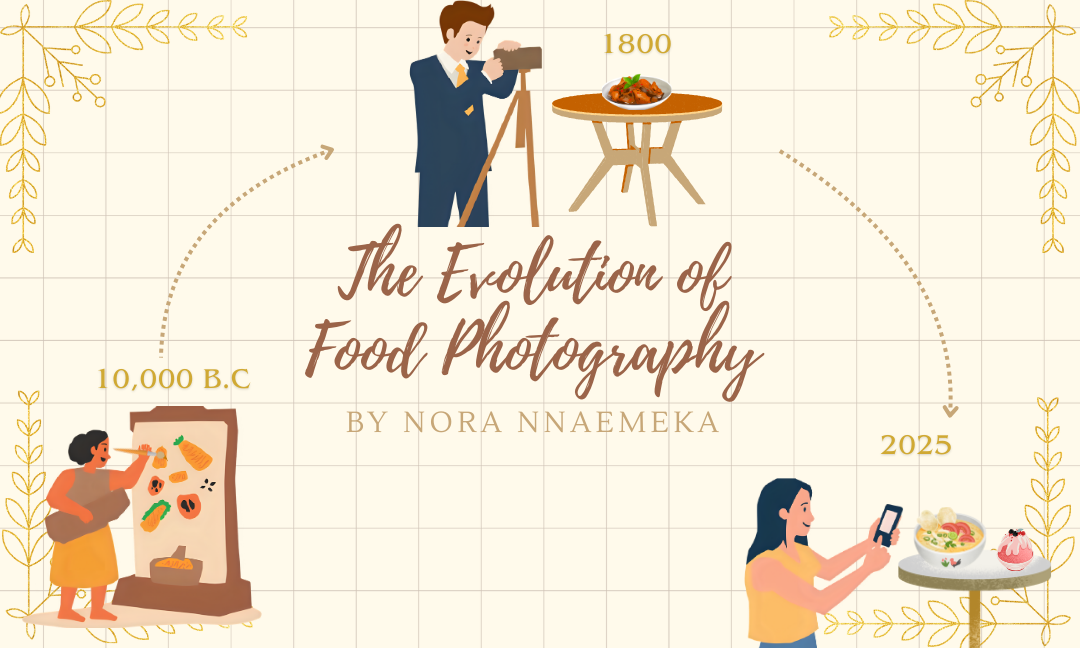Written by: Nora Nnaemeka
Edited by: Jana Daniels
Designed by: Jedrick Asuncion
Published by: Andrew Jackson
Welcome back guys! Ever wonder how we transitioned from painting meals on a wall to posting preppy breakfasts on Tiktok? Food photography has completely evolved and I’m here to show you how!
Let’s use our FTM (Food Time Machine) to travel back to the stone age to try and get a better insight.
Food in Art…
Okay, imagine this: you’re a caveman. No cameras or phones, just hanging out with some rocks.You’ve just finished a successful hunt and you wanted to brag about it. Well, back in the day they’d paint images of animals and fruits on the cave walls. Don’t be mistaken, these weren’t just minor art projects, these paintings were documenting what they ate and how they lived.
Fast forward a bit to ancient Egypt, and you’ve got hieroglyphs with bread and fish, kinda like the first food photographs. Then fast foward again to during the Middle Ages, we begin to see paintings of banquets, bowls of fruit and tables covered in bread and wine. It was all about beauty and wealth… in food!
Introducing…..Cameras!
Photography didn’t appear until the early 1800s, (when cameras were invented) and when it did, it spread like butter on bread. The first food photos were really basic, just black-and-white shots. By the late 1800s, color photography emerged, and food began to look much more delicious, although that could’ve been because of their use of synthetic dye.
Cookbook Deception
Cookbooks have always been around, dating back to the old 1700’s BC. BUT! In the late 1900s, cookbooks became popular again like an old Tiktok trend and food photography received a serious upgrade. All of a sudden, it wasn’t only about capturing the essence of food in a book, it was about bringing it to life and making it look “Mwah”.
Photographers began their sneaky tricks such as spraying food with oil to make it shimmer or utilizing fake ice cream (it was mashed potatoes, y’all!) in their photos. These images were all about selling recipes, and they succeeded. This period transformed food photography into an art, no longer a simple black and white snapshot.
Social Media Takeover…
Fast forward to the 2000s, and BOOM! Social media completely transformed everything. Instagram and Pinterest made everyone a food photographer.You didn’t even require a fancy, high tech camera anymore; your phone did the trick. By 2010, people were posting their brunch dishes like they were getting paid for it.
Those filters made me jealous of how photogenic avocado toast was. Meanwhile, while I was upset about something I wasn’t even born to see, #Foodie and #Foodstagram went viral. Social media made food photography a way to socialize, share culture, and even brag about your culinary powers. #SupermanEatsToo.
TikTok is the Present!
Now, in 2025, food photography is next-level and we’re not talking Super Mario. TikTok, Youtube and Instagram reels are where food photography is leveling up. With short videos demonstrating how to make your own bubble tea or tasty vegan tacos in 30 seconds. It’s not just about pretty pics anymore, it’s about storytelling. People want to see the process, from chopping meat and watching it sizzle on the pan, to watching you take a bite and rate your skills.
Our Youth and Food Systems crew is all over this, using social media to tell local food stories, like sustainable farming and cool tricks when talking about giving back to our earth through good food.
Conclusion
Food photography is about more than nice photos. It’s how we celebrate our multicultural food scene, whether it’s Nigerian jollof rice or a tasty Paris-baked croissant. Food photography It’s also a tool for activism. We’re talking about buying local from farmers, minimizing food waste, trying out a climate-frienfly diet or maybe even starting a mini garden in your backyard.
Whenever we share a photo of our homemade kimchi or market pickup, we’re sharing a little bit of our community and perfect that “Sharing is caring motto” from our childhoods. Also, let’s be honest, it’s fun to make your friends jealous with a flawless smoothie photo!
What’s Next? I’m here to tell ya!
Food photography is constantly evolving, isn’t it? Who knows, in the future we’ll probably have AI drones creating 3D holograms of food you can actually eat or apps that allow you to “taste” a meal directly through your screen (okay, perhaps not just yet, Lol).
For the time being, let’s use our phones to create memories that matter. So, the next time you’re at a cool market place or cooking with your loved ones, snap a photo, share it, and let that #Foodie love continue to go around.
Let’s keep food photography going!

